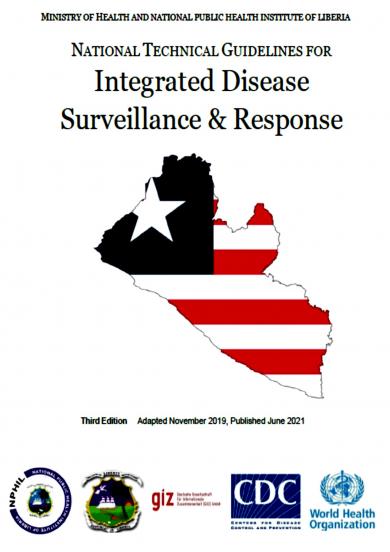
MINISTRY OF HEALTH AND NATIONAL PUBLIC HEALTH INSTITUTE OF LIBERIA NATIONAL TECHNICAL GUIDELINES FOR Integrated Disease Surveillance & Response Third Edition
More than ten years ago, the Ministry of Health (MOH) adapted a generic Integrated Disease Surveillance and Response Technical (IDSR) Guideline supported by World Health Organization-Regional Office for Africa (AFRO) in collaboration with the United States Centers for Disease Control and Prevention (CDC) in Atlanta. The guidelines served as a general reference for surveillance activities across all levels, as a guide for improving early detection and preparedness activities, improved and timely investigation and response and as a resource for developing training, supervision, communication of outbreak (information) and evaluation of surveillance activities. They provided a set of definitions for threshold levels that initiate action for responding to specific diseases.
During the last ten years, many changes have occurred in both Africa’s health status, social, economic, environmental and technical enabling environment. The emergence and re- emergence of diseases such as yellow fever, other conditions and events such as climate change, and natural disasters have resulted in the need to review the evolving public health priorities for disease surveillance and response.
These guidelines incorporate priority emerging and re-emerging communicable and non- communicable diseases identified in 2015. They also address the International Health Regulations (IHR) (2005) and how to implement the requirements and build capacities to support them for disease surveillance and response. This document reflects national priorities, sets policies and standards for data management, sets thresholds for public health action and outlines responsibilities at all levels of the health system.


